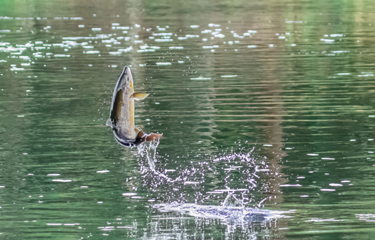As Ireland’s wild salmon run season takes off, recently released totals for the number of fish entering the country’s rivers improved in 2020, but are well down on figures from 20 years ago.
Over the past few weeks, the salmon run has reached the Irish coast, but a relatively dry summer means rivers are low, meaning fish are more prone to poaching, according to Inland Fisheries Ireland (IFI), the state agency responsible for the protection and conservation of freshwater fish and habitats.
“Over the last few weeks, the annual salmon run has reached the coast of Ireland and as a consequence, IFI has seen a marked increase in illegal activity at sea and in river estuaries,” the IFI said in a statement to SeafoodSource. “This is exacerbated by the fact that many rivers are in drought conditions and fish are not entering freshwater. While it would seem that there is a healthy run of salmon, low water levels mean that salmon are very visible, particularly in locations like the weir in Galway, where fish are awaiting freshwater to be enticed to run upstream. The indications are that there is a good run of salmon so far, but this cannot be verified until later in the season.”
Last year, the IFI reached out to members of the public for information after a surge in poaching that was linked to COVID-related mass-furloughing of workers. This year, IFI officers “continue to patrol the areas of greatest risk to salmon stocks and to deter illegal salmon fishing or poaching.”
“In line with previous years, as there is an improvement in wild salmon returning to the coast, there is also a corresponding increase in illegal activity,” it said.
The IFI issues licenses for angling, but salmon stocks returning to the country’s rivers have dropped from 20 percent in the 1970s to approximately five percent in 2019, according to the organization’s latest annual report. It’s published data shows the number of salmon caught by anglers went from 26,074 in 2001 to 21,650 in 2020, while the volume of salmon in the category termed “commercial salmon harvest” went from 8,843 to 5,415 in the same timeframe. Various factors, including warming oceans and a deterioration in Irish river water quality related to intensification of agriculture, have been blamed for the numbers.
Photo courtesy of seancooneyfoto/Shutterstock







